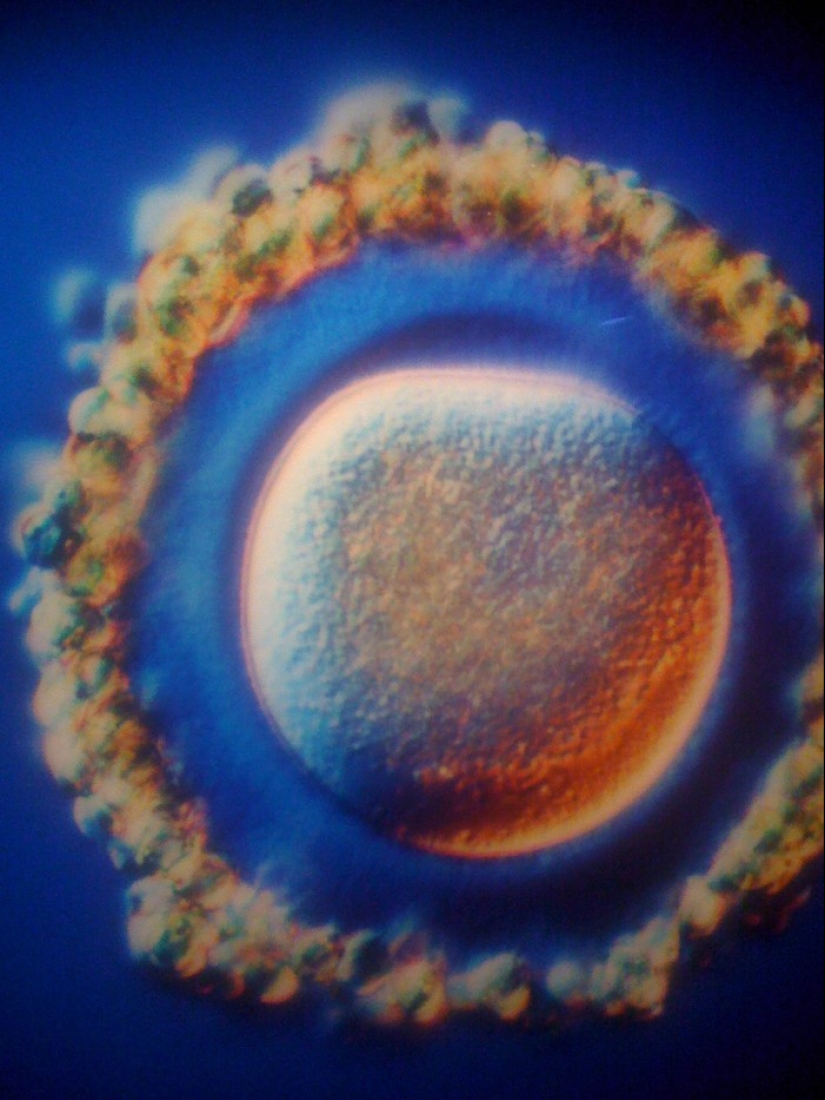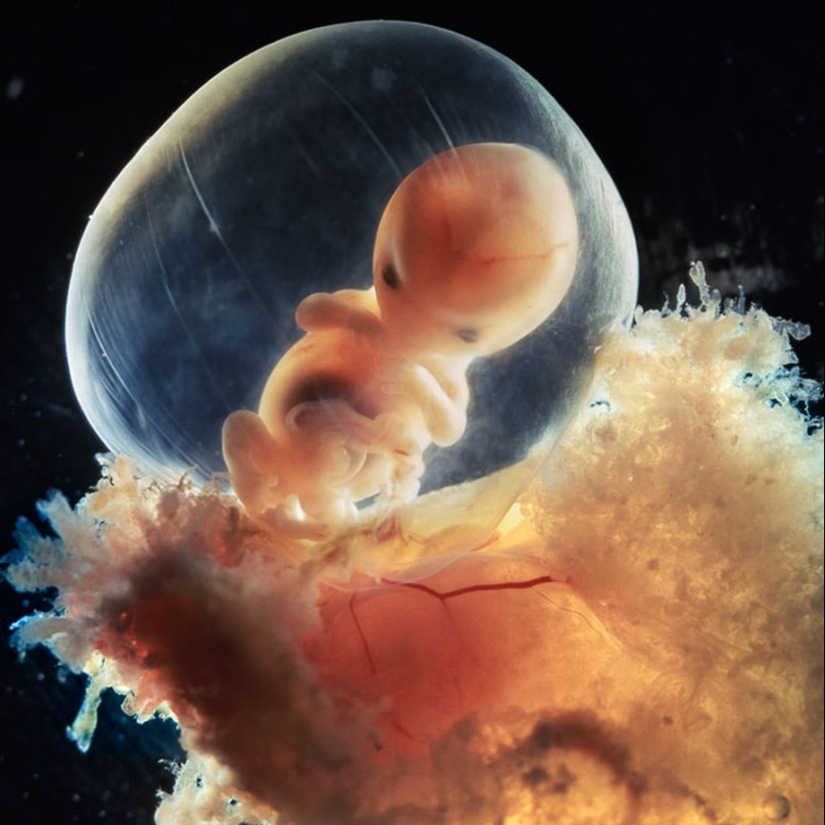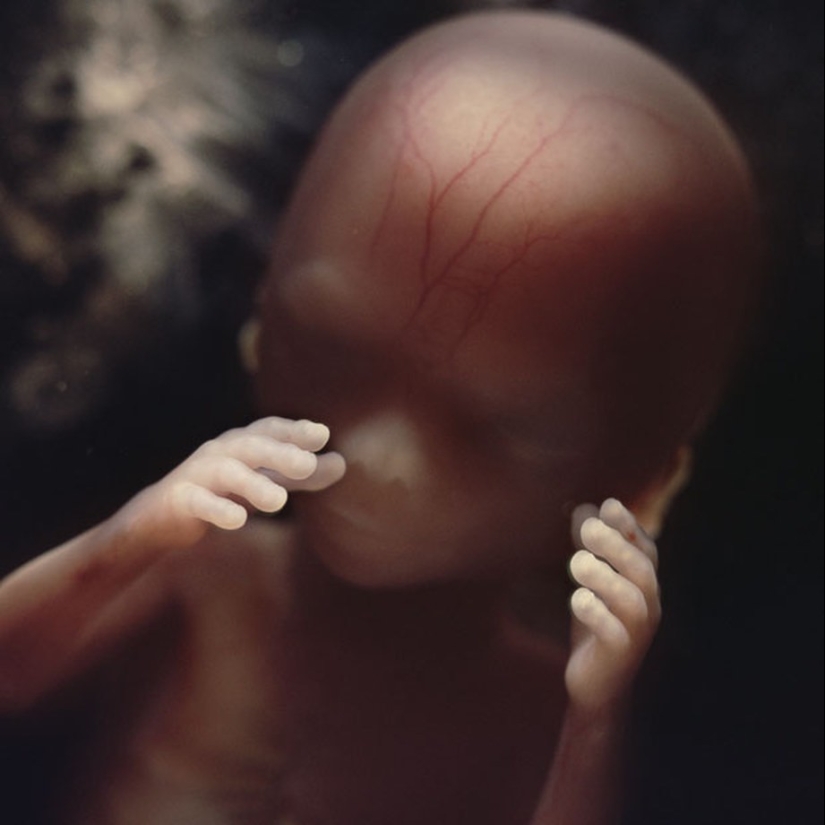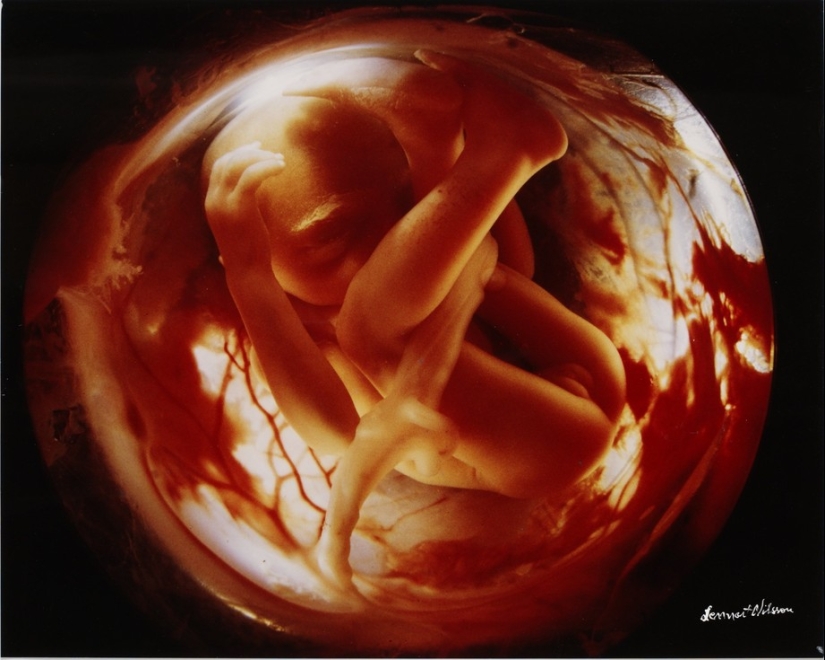Unique footage - from conception to birth
Categories: Health and Medicine | Microworld | Science
By Pictolic https://pictolic.com/article/unique-footage-from-conception-to-birth1.htmlSince childhood, the microscope and camera were the main hobbies of the brilliant photographer Lennart Nilsson, who wanted to show the world the beauty of the human body at the cellular level. Nilsson managed to obtain photographs of a human embryo back in 1957, but they were not impressive enough to show them to the general public.
A cystoscope, a medical device used to examine the bladder from the inside, helped him get the most accurate and colorful images. Nilsson attached a camera and light guide to it and took thousands of pictures of the baby's life inside the womb.
Thus, the skillful hands of Lennart Nilsson performed a miracle: they showed the whole world the mystery of the origin of human life.

Lennart Nilson was born on August 24, 1922 in Stangnas, Sweden, into a family that loved photography.
Even as a child, Lennart was more interested in the microworld, the one that can only be seen through a microscope. Armed with a microscope and a camera, he penetrated into worlds inaccessible to the naked eye, the inner worlds of man in the truest sense of the word.
 Sperm in the fallopian tube
Sperm in the fallopian tube
Nilsson began his career in photography in the mid-1940s, working as a freelancer for various Swedish publications. At that time, such works as "Midwife in Lapland" and "Polar Bear Hunt in Spitsbergen" brought him international attention. Lennart began his experiments in the field of microphotography in the mid-1950s, actively collaborating with various scientific and medical organizations.
 Egg
Egg
He managed to photograph a human fetus for the first time in 1957. The unusual “reportage” photography from the “depths” of the female body became possible after Nilsson, after a series of experiments, managed to combine a micro camera and a micro illuminator, attaching them to a cystoscope tube (this device was used to examine the bladder from the inside) - this is how unique shots appeared, illustrating the process of the birth of a human embryo and its development.
 Sperm
Sperm
One of the father's 200 million spermatozoa, having broken through the egg's membrane, literally pours into it...
 Spermatozoa
Spermatozoa
"When I first saw the fetus, it was 15 weeks old and sucking its thumb," Nilsson said. "But the magazine editors wanted me to photograph the fetus's face. It took many years."
Nilsson gained international fame in 1965 when LIFE magazine published 16 pages of photographs of a human embryo. The photographs were immediately reproduced in Stern, Paris Match, The Sunday Times and other magazines.
 Embryo
Embryo
That same year, Nilsson's book of photographs, A Child is Born, was published, with eight million copies sold out in the first few days. The book went through several reprints and remains one of the best-selling illustrated books in the history of such albums.
 Fetus
Fetus
Nilsson continued his work later, making not only photographs but also films.
In the 1960s and early 1970s, Nilsson collaborated with LIFE, taking micrographs not only of various stages of human intrauterine development, but also of other physiological processes within human and animal organisms.

The Voyager I and Voyager II spacecrafts, carrying messages to extraterrestrial civilizations, were equipped, in addition to other documents, with photographs by Nilson. He continues his scientific and photographic work to this day.

 Week 8.
Week 8.

 10 weeks. The eyelids are already half open. They will be fully formed within a few days.
10 weeks. The eyelids are already half open. They will be fully formed within a few days.



 16 weeks after fertilization. The skeleton consists mainly of a flexible rod and a network of blood vessels visible through the thin skin.
16 weeks after fertilization. The skeleton consists mainly of a flexible rod and a network of blood vessels visible through the thin skin.

 16 weeks: Your inquisitive baby is already using his hands to explore his surroundings.
16 weeks: Your inquisitive baby is already using his hands to explore his surroundings.

 18 weeks. About 14 cm. The embryo can now perceive sounds from the outside world.
18 weeks. About 14 cm. The embryo can now perceive sounds from the outside world.

 20 weeks after fertilization.
20 weeks after fertilization.

 26 weeks after fertilization
26 weeks after fertilization

 36 weeks. In a month the baby will be born.
36 weeks. In a month the baby will be born.


Recent articles

Illustrator from Canada Mark Gagne (Mark Gagne) presented a series of works called "Ink Photography" (Inked Photography). If you ...

Someone thinks that perfectionism is a disease that should be treated. Someone, on the contrary, teaches others how to restore ...

Although body positivity is actively promoted to the masses these days, slim figures remain trendy. Even those who demonstrate ...